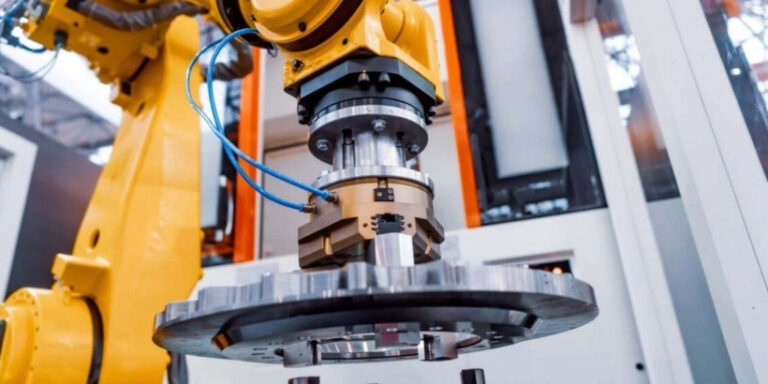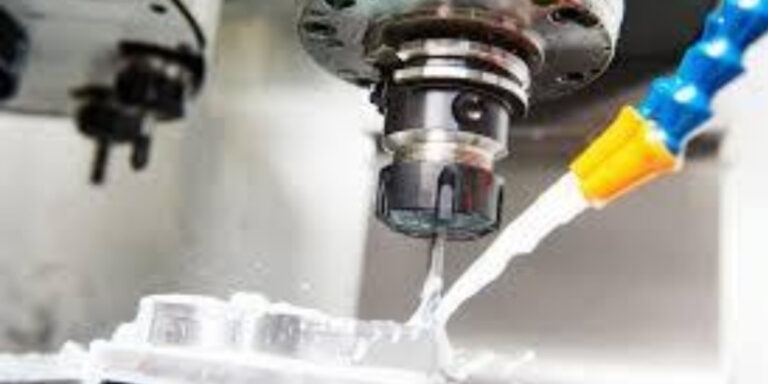How To Implement A Successful Continuous Improvement Program In Manufacturing
Hey there! Are you a manufacturing manager or leader looking to improve your company¡¯s operations and increase efficiency? If so, then implementing a continuous improvement program could be the key to success.
In today¡¯s fast-paced world of manufacturing, it is essential to constantly strive for better processes, products, and outcomes. And that¡¯s where continuous improvement comes in! A successful continuous improvement program can help manufacturers identify inefficiencies, reduce waste, and improve quality all while increasing employee engagement and satisfaction.
But how do you go about implementing such a program? It can seem overwhelming at first, but with the right approach and mindset, anyone can successfully launch a continuous improvement initiative. In this article, we¡¯ll explore some best practices for building and sustaining a culture of continuous improvement within your manufacturing organization.
So grab a cup of coffee (or tea), sit back, and let’s dive into the world of lean manufacturing!
Establishing Goals And Objectives
Did you know that companies with a successful continuous improvement program in place have seen an increase in productivity by up to 20%?
That’s why it’s crucial to establish clear goals and objectives for your own program.
Defining metrics that align with your overall business strategy is key, as it allows you to measure progress and identify areas for improvement.
Additionally, incentivizing teams to actively participate in the program can drive engagement and foster a culture of continuous improvement throughout the organization.
By setting achievable goals and providing recognition for team members’ contributions, you’ll be well on your way towards implementing a successful continuous improvement program in your manufacturing operation.
Understanding The Lean Manufacturing Methodology
Now that we have established our goals and objectives, it’s time to dive into understanding the Lean Manufacturing methodology.
This approach focuses on streamlining processes, reducing waste, and continuous improvement. As a personal advocate of this philosophy, I believe in coaching staff towards identifying areas for improvement and implementing changes that positively impact our operations.
Through Lean principles such as 5S and Kaizen events, we can create an environment where everyone is committed to making incremental improvements every day. By empowering our team to take ownership of their workspaces and suggesting ideas for process optimization, we can improve efficiency while also fostering a sense of pride in the work being done.
The beauty of Lean manufacturing is that it’s not just about cutting costs or increasing productivity – it’s about creating a culture of excellence where everyone feels valued and motivated to contribute to the overall success of the company.
Promoting A Culture Of Continuous Improvement
When it comes to implementing a successful continuous improvement program in manufacturing, promoting a culture of continuous improvement is key. This means embracing change and encouraging employees at all levels to contribute their ideas for improving processes and procedures.
By creating an environment that rewards progress and recognizes the efforts of those who are actively engaged in making improvements, companies can inspire their workforce to strive towards excellence.
In order to truly embed this culture within the organization, it’s important to provide regular training and communication on the importance of continuous improvement, as well as establishing clear goals and metrics for tracking progress.
When everyone is aligned around the same objectives and understands how they can contribute to achieving them, organizations can create a powerful engine for driving sustainable growth over time.
Developing Effective Processes
I’m excited to dive into how to create effective processes in manufacturing. To start, let’s discuss creating standard operating procedures. Then, we can move on to documenting process improvements and establishing quality assurance protocols. I’m sure that together we’ll be able to come up with a successful continuous improvement program.
Creating Standard Operating Procedures
So, you want to create standard operating procedures for your manufacturing company’s continuous improvement program?
Well, let me tell you, engaging staff and training employees is key.
First things first, involve your team in the process of creating these procedures. This will not only help them feel valued but also give them a sense of ownership over the new processes.
Next up, provide thorough training on the SOPs so that everyone understands what they need to do and why it matters.
Encourage feedback from employees as well – after all, they are the ones who will be following these procedures day in and day out!
By involving and training your staff effectively, you’ll set yourself up for success when implementing new SOPs in your continuous improvement program.
Documenting Process Improvements
Now that you’ve got your standard operating procedures in place, it’s time to start documenting the process improvements that come along with continuous improvement.
This might include assigning tasks for specific projects and analyzing data to see where there are opportunities for growth.
By creating clear documentation of these processes, you’ll be able to track progress over time and make adjustments as needed.
Plus, having a record of what works (and what doesn’t) will be invaluable if you need to train new employees or share best practices within your organization.
Let’s dive into how you can effectively document process improvements in your manufacturing company’s continuous improvement program.
Establishing Quality Assurance Protocols
Now that we’ve talked about the importance of documenting process improvements, it’s time to discuss another crucial aspect of developing effective processes: establishing quality assurance protocols.
Quality assurance is all about monitoring compliance and identifying errors before they become serious problems. By putting in place clear guidelines for how your team should approach quality control, you can ensure that every product leaving your manufacturing facility meets high standards of excellence.
In this section, we’ll explore how to create a robust quality assurance program that will help you achieve consistent results and build trust with your customers.
Implementing Feedback Loops
Did you know that implementing feedback loops can increase the success rate of a continuous improvement program by up to 60%?
That’s right, incorporating regular feedback from employees and customers is crucial in identifying areas for improvement and ensuring that changes made are effective.
Integrating technology into your feedback processes can also make it easier to gather and analyze data.
But how do you measure the return on investment (ROI) of these improvements? Here are four ways to effectively measure ROI:
1) track cost savings or revenue increases resulting from the improvements,
2) conduct employee surveys to gauge satisfaction and engagement levels,
3) monitor production efficiency before and after implementation, and
4) compare customer satisfaction ratings pre- and post-improvement.
By utilizing these methods, you can confidently show the impact of your continuous improvement efforts.
Remember, successful implementation requires ongoing commitment to gathering feedback, analyzing data, making necessary changes, and measuring results.
Measuring Results And Tracking Progress
Now that we have implemented our continuous improvement program, it’s important to measure the results and track progress. This is crucial for quantifying ROI and benchmarking performance against our goals. One effective way to do this is by utilizing a table or spreadsheet to track key metrics such as quality, productivity, safety incidents, and cost savings. By regularly updating this data and analyzing trends over time, we can identify areas of improvement and adjust our strategies accordingly. It’s also important to establish clear targets and timelines for achieving them in order to keep everyone accountable and motivated towards achieving success. Remember that tracking progress is an ongoing process, so make sure to schedule regular check-ins with your team to ensure everyone stays on track towards meeting their goals.
Sustaining Long-Term Improvement
Now that you have successfully implemented a continuous improvement program in your manufacturing process, it’s important to focus on sustaining long-term improvement.
One way to do this is by encouraging innovative ideas from employees at all levels of the organization. This can lead to new and improved processes or products that will keep your company competitive in the market.
Additionally, regular data analysis should continue to be a key component of your improvement program. By analyzing data regularly, you’ll be able to identify areas for further improvement and make informed decisions about how best to allocate resources.
Remember, sustaining long-term improvement requires ongoing effort and commitment from everyone involved in the process.
Conclusion
In conclusion, implementing a successful continuous improvement program in manufacturing is not an easy feat. It requires careful planning, hard work and dedication from all stakeholders involved. However, the benefits are undeniable – increased efficiency, reduced waste and ultimately, better products for your customers.
Let me tell you a story about a company that was struggling to keep up with their competitors due to inefficiencies within their production line. They decided to implement a continuous improvement program using Lean methodology and were able to reduce lead times by 50%. This resulted in happier customers and increased profits for the business.
Continuous improvement should be seen as a journey rather than a destination. You will encounter roadblocks along the way but it¡¯s important to stay focused on your goals and objectives.
Remember to involve everyone in the process, promote a culture of continuous improvement and develop effective processes that align with your organizational values.
In short, embracing continuous improvement means committing yourself to ongoing change; it¡¯s like sailing into uncharted waters where there is no end sighted yet but constant progress is achieved through consistent effort towards excellence.






